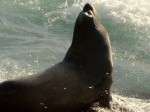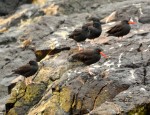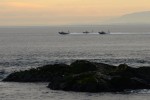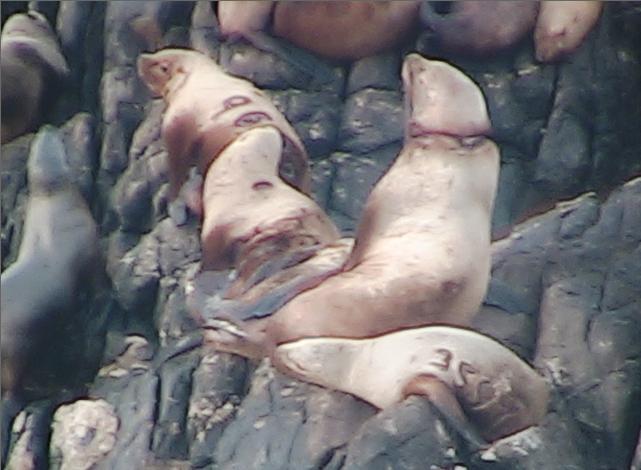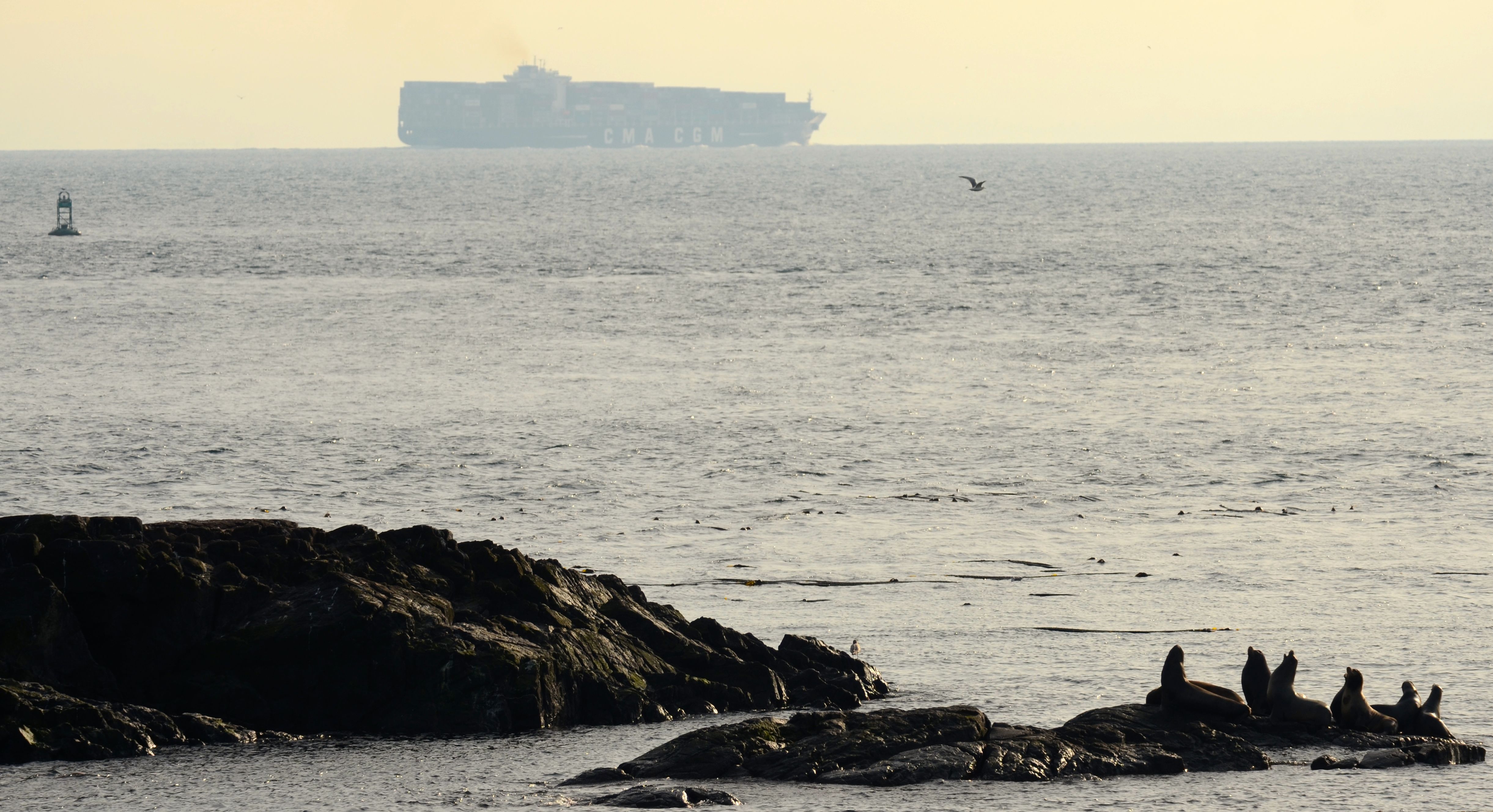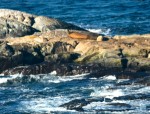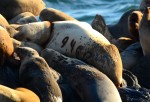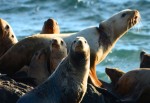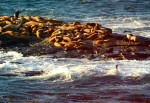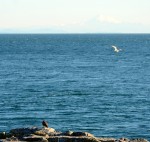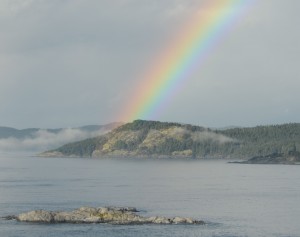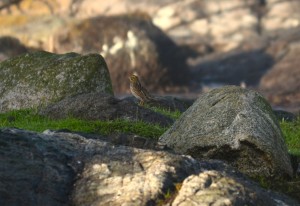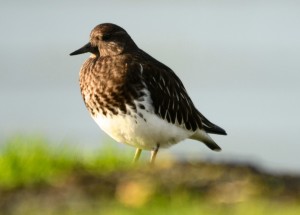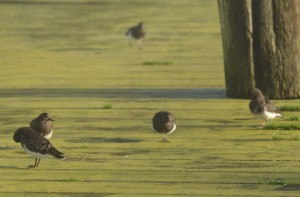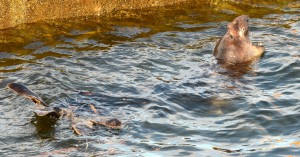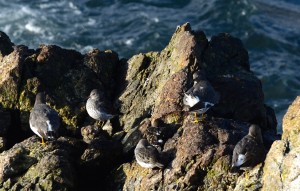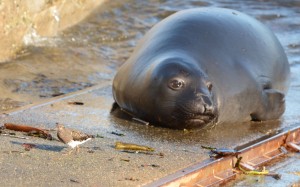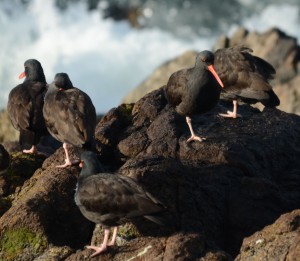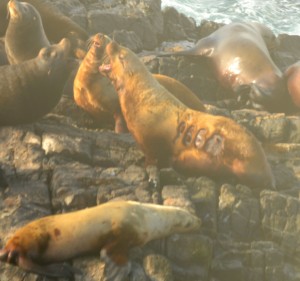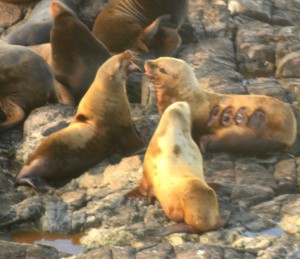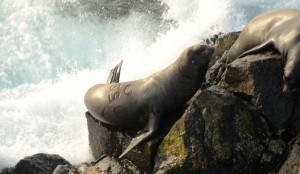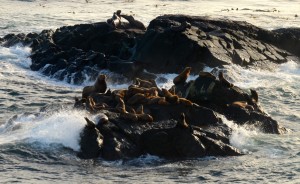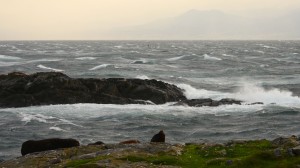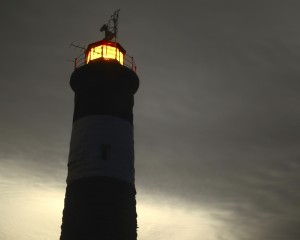The wind dissipated over night. After 8:00am, the wind was calm, only blowing 3 to 5 knots from the southwest. The barometer rose to a high of 1030 hPa at noon, then slowly fell to about 1027 hPa. The temperature reached a high of 12.6oC
There were five visitors that came from Pearson College, on the boat Second Nature. Courtney brought two folks from Cullen Water to install the repaired desalinator pump. Tristan and Robin, volunteers from Wales, helped carry the many boxes that contain the new composting toilets. Each house will have the toilets installed soon.
There were two whale watching boats in the reserve this afternoon. Four halibut fishing boats were spotted to the west of the reserve for most of the afternoon. Many large boats passed within a few kilometres of the southern boundary of the reserve, including a submarine, tankers and HMCS Edmonton.
The harbour seals were difficult to spot for the census yesterday. With the sun and warm weather today, they were hauled out on the rocks to catch some rays. 32 were seen today, compared with only 7 yesterday.
Three branded sea lions were seen on South Seal Rocks, just south of the engine room. I have let Pat Gearin at NOAA know about the sightings and he will let me know where else they have been.
There are updates about the two branded sea lions spotted yesterday.
Pat Gearin wrote to me with the details about the Steller that was branded 966R as a pup at Rogue Reef, Oregon in July 2011. It is a male and so far we have 9 resights from this individual, all from BC. In 2011, he was sighted at Pachena Point once, and in 2012 he was sighted at Carmanah 8 times.
Matthew Tennis wrote that U596 was branded on August 15, 2014 in Astoria. At that time he weighed ~193 kg. He was seen in Astoria for a few days following the branding and again in the middle of October. This is the first resight for this animal outside of Astoria. They have high site fidelity and being a relatively young animal, it is very possible he will be seen at Race Rocks for years to come.
Maintenance tasks were performed today: moving propane tanks, pressure washing the algae and bird poop off the exterior of the houses, dismantling the old toilets, picking up garbage that has washed ashore and running generator and new and improved desalinator.
-
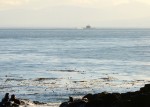
-
A submarine motors to the south of Race Rocks. Nov. 7, 2014. Photo by Nick Townley
-

-
A gull that was killed and eaten recently by a bird of prey, maybe an eagle.
-

-
A scapula of a sea lion found in a mud puddle on the northeast side of the Race Rocks. This is probably from a sea lion carcass that washed up there in the winter.
-

-
The harbour seals are easy to spot today, as they sun themselves on West Rocks, with an eagle on the high point of the rock.
-
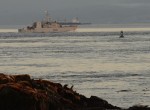
-
HMCS Edmonton, a coastal defence vessel from the Canadian Navy, passes just south of the bouy marking Rosedale Rock. Nov. 7, 2014. Photo by Nick Townley
-
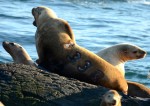
-
A steller sea lion with the brand 833R. It was branded at Rogue Reef, Oregon.
-
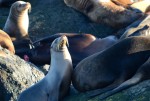
-
A california sea lion with the brand U_00. The first number couldn’t be seen.
-

-
The desalinator sea lion returned last night to his favourite spot by the desalinator bunker, just in time for the delivery of the new pump. The sea lion appears to be moulting, maybe that’s why it wants some privacy.
-
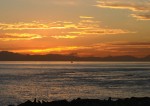
-
A beautiful sunset to cap off the day.
-
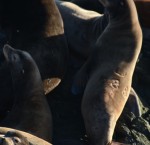
-
A california sea lion with the brand U488. It was captured in the Columbia River Area and branded in Astoria, Oregon.

